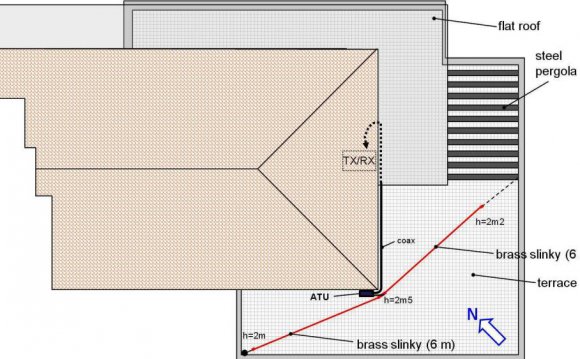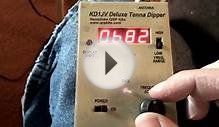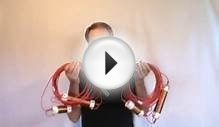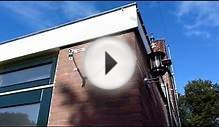
You can enjoy Amateur Radio on the HF bands with nothing more than a copper wire strung between two trees. This is the classic dipole antenna. It comes in several varieties, but they all function in essentially the same way.
Single-band dipoles are among the easiest antennas to build. All you need is some stranded, noninsulated copper wire and three plastic or ceramic insulators. A 1/2-wavelength dipole is made up of two pieces of wire, each 1/4-wavelength long.
Calculating the lengths of the 1/2-wavelength wires is simple. Just grab a calculator and perform the following bit of division:
Length (feet) = 468/frequency (MHz)
Actually, you should add about six inches to the results of your calculations. You’ll need that length margin to trim and tune for the lowest SWR. (SWR stands for Standing Wave Ratio. It is measured with a device known as an SWR meter. Many modern transceivers include SWR meters, or you can purchase them separately. An ideal SWR is 1:1.
Join the two wires in the center with an insulator, then place insulators at both ends. Solder the center conductor of your coaxial cable feed line to one side of the center insulator. (It doesn’t matter which side.) Solder the shield braid of your cable to the other side. Connect ropes, nylon string or whatever to the end insulators and haul your antenna skyward. Get it as high as you can and as straight as possible. Don’t hesitate to bend your dipole if that’s what it takes to make it fit.
Once your dipole is safely airborne, fire up your transmitter and check the SWR at many points throughout the band. (It helps if you can plot the results on graph paper.) If you see that the SWR is getting lower as you move lower in frequency, your antenna is too long. Trim a couple of inches from each end and try again. On the other hand, if you see that the SWR is getting higher as you go lower in frequency, your antenna is too short. You’ll need to add wire to both ends and make another series of measurements.
When you’ve finished trimming your dipole, you’ll probably end up with an SWR of 1.5:1 or less at the center frequency, rising to 2:1 or somewhat higher at either end of the band. Don’t expect a 1:1 SWR across the entire band. By carefully trimming the antenna you can move the low-SWR portion to cover your favorite frequencies.
matagumpay na entrepreneur razoo crowdfunding entrepreneurship ideas for students seed stage professional certificate indiegogo successful projects professional courses after 12th commerce apna unicorn startup it entrepreneur entrepreneurs and ventures capitalists google education harvard free online courses stealth mode startup professional courses after 12th mun brightspace melbourne polytechnic moodle the startup playbook crowdfunding mlm companies online courses club open educational resources teaching courses new education policy 2019 higher secondary strategic entrepreneurship pharmacy degree microsoft 365 education nurs young entrepreneurs ideas personal resources of an entrepreneur kurt hahn startup playbook entrepreneurs looking for business partners microsoft office student kirkpatrick evaluation model niche indiegogoINTERESTING VIDEO












